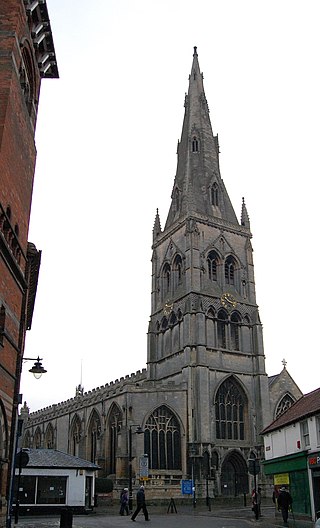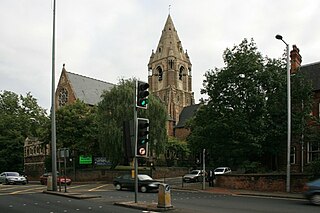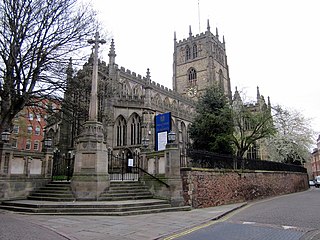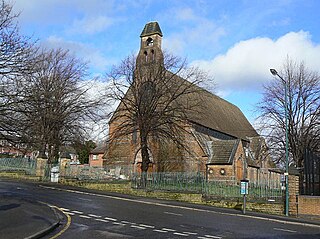
Sneinton is a suburb of Nottingham and former civil parish in the Nottingham district, in the ceremonial county of Nottinghamshire, England. The area is bounded by Nottingham city centre to the west, Bakersfield to the north, Colwick to the east, and the River Trent to the south. Sneinton lies within the unitary authority of Nottingham City, having been part of the borough of Nottingham since 1877.

All Saints' Church, Nottingham, is an Anglican church in Nottingham, England.
Rev. Scrope Berdmore was an English clergyman.

St Peter's Church, formally The Church of St Peter with St James, is an Anglican parish church in the city centre of Nottingham, England. It is part of the parish of All Saints', St Mary's and St Peter's, Nottingham.

St Albans's Church, Sneinton, properly called Our Lady of Perpetual Succour and St Alban, is a Ukrainian Greek Catholic Church in Bond Street, Sneinton, Nottingham, England. It was built in 1888–87 as the Church of England parish church of Saint Alban. In 2003 the Diocese of Southwell and Nottingham declared it redundant and sold it to the Ukrainian Catholic Eparchy of the Holy Family of London, who added the dedication of Our Lady of Perpetual Succour.

St Mary Magdalene Church, Newark-on-Trent is the parish church of Newark-on-Trent in Nottinghamshire, England. It is dedicated to Mary Magdalene and is the tallest structure in the town.

St. Andrew's Church, Nottingham in Nottinghamshire, England is a parish church in the Church of England.

St. John the Evanglist, Carrington is a parish church in the Church of England in Carrington, Nottingham.

St. Mary's Church, Attenborough is a parish church in the Church of England in the village of Attenborough, Nottinghamshire.

St Peter's Church, Radford is an Anglican parish church in Radford, Nottingham, located at 171 Hartley Road. It is a Grade II listed building as being of special architectural or historic interest.

Charles Lloyd was a pipe organ builder based in Nottingham who flourished between 1859 and 1908.

The Church of St Mary the Virgin is the oldest parish church of Nottingham, in Nottinghamshire, England. The church is Grade I listed by the Department for Digital, Culture, Media and Sport as a building of outstanding architectural or historic interest. It is one of only five Grade I listed buildings in the City of Nottingham.
St. Paul's Church, George Street, was a Church of England church built as a chapel of ease to St. Mary's Church, Nottingham. It was opened in 1822 and closed in 1924.
St. James' Church, Standard Hill was a Church of England church in Nottingham.
St. Matthew's Church, Talbot Street was a Church of England church in Nottingham between 1856 and 1956.

St Matthias' Church, Nottingham, was a Church of England church in Sneinton, Nottingham, between 1868 and 2003. In 2009 the building was reopened as St. Mary & St. George's Coptic Orthodox Church.
St Mark's Church, Nottingham, was a Church of England church in Nottingham, Nottinghamshire, England between 1856 and 1958. The section of Huntingdon Street where the church was located was formerly called Windsor Street.
St. Luke's Church, Nottingham, was a Church of England church in Nottingham at the junction of Carlton Road and St. Luke's Road near Sneinton between 1862 and 1923.
St. Philip's Church, Nottingham, was a Church of England church in Nottingham on Pennyfoot Street between 1879 and 1963.

St Christopher's Church, Sneinton is a Church of England church in Sneinton Nottingham.















